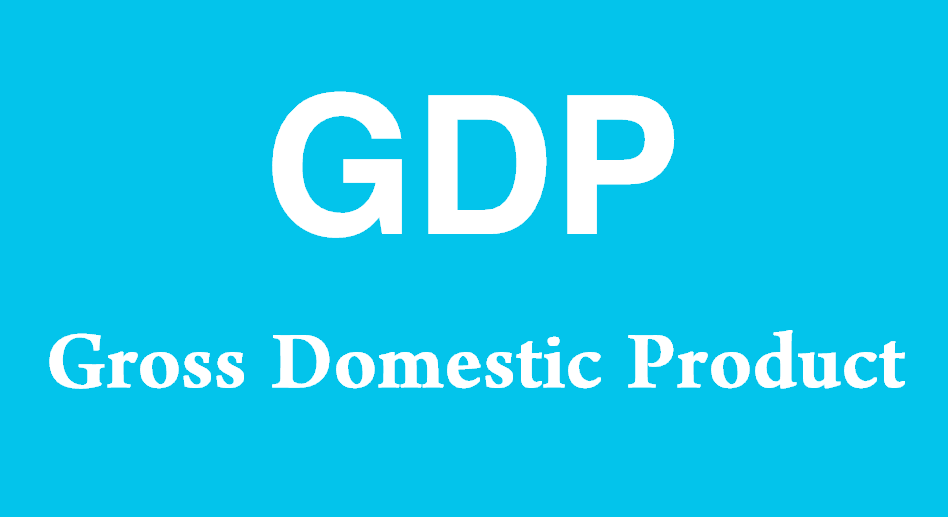What does GDP stand for?
GDP stands for Gross Domestic Product. It is a crucial economic indicator that measures the total monetary value of all final goods and services produced within a country’s borders over a specific period, usually a year or a quarter. GDP is used to gauge the health of a nation’s economy, assess its economic performance, and compare it with other economies. Understanding GDP is essential for policymakers, economists, investors, and businesses as it provides insights into the overall economic activity and growth prospects of a country.

Comprehensive Explanation of Gross Domestic Product
Definition and Components
Gross Domestic Product (GDP) represents the total market value of all final goods and services produced within a country during a specific period. It is a comprehensive measure of a nation’s overall economic activity. GDP includes the following components:
- Consumption (C): The total value of all goods and services consumed by households. This includes spending on durable goods (e.g., cars, appliances), nondurable goods (e.g., food, clothing), and services (e.g., healthcare, education).
- Investment (I): The total value of all capital goods purchased by businesses for future production. This includes spending on new buildings, machinery, and equipment, as well as changes in business inventories.
- Government Spending (G): The total value of goods and services purchased by the government. This includes spending on defense, education, public safety, and infrastructure.
- Net Exports (NX): The value of a country’s exports minus its imports. Net exports can be positive (trade surplus) or negative (trade deficit).
The formula for calculating GDP is: GDP=C+I+G+(X−M) where X is exports and M is imports.
Types of GDP
Nominal GDP
Nominal GDP is the total market value of goods and services produced in a country, measured using current prices. It does not account for changes in price levels or inflation. As a result, nominal GDP can be misleading when comparing economic performance over time, as it may reflect changes in prices rather than actual growth.
Real GDP
Real GDP adjusts nominal GDP for changes in price levels, providing a more accurate measure of economic performance. It is calculated using constant prices from a base year, allowing for comparisons across different time periods. Real GDP is a better indicator of a country’s economic growth and overall productivity.
GDP per Capita
GDP per capita is the average economic output per person, calculated by dividing a country’s GDP by its population. It provides a measure of the standard of living and economic well-being of the average citizen. Higher GDP per capita indicates a higher standard of living, while lower GDP per capita suggests economic challenges.
Methods of Calculating GDP
Expenditure Approach
The expenditure approach calculates GDP by summing up all expenditures made on final goods and services within a country. It includes consumption, investment, government spending, and net exports. This method is widely used because it provides a clear picture of the demand side of the economy.
Income Approach
The income approach calculates GDP by summing up all incomes earned by individuals and businesses in the production of goods and services. This includes wages, salaries, profits, rents, and taxes minus subsidies. The income approach highlights the distribution of income among different factors of production.
Production (Output) Approach
The production approach calculates GDP by summing up the value added at each stage of production. Value added is the difference between the total sales of goods and services and the cost of intermediate inputs. This method emphasizes the supply side of the economy and the contribution of different sectors to GDP.
Importance of GDP
Economic Growth
GDP is a key indicator of economic growth. An increasing GDP signifies a growing economy, while a declining GDP indicates economic contraction. Policymakers and economists use GDP to assess the effectiveness of economic policies and identify areas needing intervention.
Standard of Living
GDP per capita is commonly used to compare the standard of living across countries. Higher GDP per capita generally indicates better living conditions, higher income levels, and improved access to goods and services.
Policy Formulation
Governments and central banks use GDP data to formulate monetary and fiscal policies. By understanding the state of the economy, policymakers can make informed decisions about interest rates, taxation, government spending, and other economic measures.
Investment Decisions
Investors use GDP data to make informed investment decisions. A growing GDP suggests a healthy economy and potential investment opportunities, while a shrinking GDP may signal economic challenges and risks.
Limitations of GDP
Exclusion of Non-Market Transactions
GDP does not account for non-market transactions, such as household labor, volunteer work, and informal economy activities. This can lead to an underestimation of a country’s total economic activity.
Environmental Degradation
GDP does not consider the environmental impact of economic activities. Economic growth may come at the cost of environmental degradation, which is not reflected in GDP figures.
Income Inequality
GDP measures the total economic output but does not provide information on income distribution. A high GDP may mask significant income inequality within a country.
Quality of Life
GDP does not capture factors that contribute to the quality of life, such as health, education, and overall well-being. As a result, it may not fully reflect the economic welfare of a nation’s citizens.
Alternatives to GDP
To address the limitations of GDP, several alternative measures have been developed:
Gross National Product (GNP)
GNP measures the total market value of all final goods and services produced by a country’s residents, regardless of the location of production. Unlike GDP, GNP includes income earned by residents from abroad and excludes income earned by foreign residents within the country.
Human Development Index (HDI)
HDI is a composite index that measures a country’s social and economic development. It includes indicators such as life expectancy, education, and per capita income, providing a more comprehensive picture of human well-being.
Genuine Progress Indicator (GPI)
GPI adjusts GDP by considering factors such as income distribution, environmental costs, and non-market transactions. It aims to provide a more accurate measure of economic welfare and sustainable development.
Historical Trends and Global Comparisons
Historical Trends
Examining historical GDP trends helps to understand the economic evolution of a country. Major events such as wars, economic recessions, technological advancements, and policy changes can significantly impact GDP growth rates.
Global Comparisons
Comparing GDP across countries provides insights into their relative economic performance. Advanced economies like the United States, China, and Germany have high GDP levels, while developing countries may have lower GDP but higher growth rates.
Future of GDP Measurement
Digital Economy
The rise of the digital economy poses challenges for traditional GDP measurement. New methods are being developed to capture the economic value generated by digital activities, such as e-commerce, digital services, and online platforms.
Sustainability
Increasing focus on sustainability has led to efforts to integrate environmental and social factors into GDP measurement. Green GDP and other indicators aim to account for the environmental impact of economic activities and promote sustainable development.
Notes to Importers
Understanding GDP’s Relevance
For importers, understanding GDP is crucial for making informed business decisions. GDP provides insights into the economic health and growth prospects of target markets, helping importers identify opportunities and risks.
Key Considerations for Importers
Market Demand
GDP growth indicates increasing consumer spending and demand for goods and services. Importers can use GDP data to assess market potential and plan their product offerings accordingly.
Currency Fluctuations
GDP performance can influence currency exchange rates. Strong GDP growth often leads to a stronger currency, affecting the cost of imports. Importers should monitor GDP trends to manage currency risks.
Trade Policies
Governments may adjust trade policies based on GDP performance. Importers should stay informed about changes in tariffs, trade agreements, and regulations that can impact their business.
Supply Chain Planning
GDP data can help importers assess the stability and reliability of supply chains. A growing economy may indicate robust infrastructure and logistics capabilities, while an unstable economy may pose supply chain challenges.
Sample Sentences Using GDP
- “The country’s GDP growth rate has been steadily increasing, indicating a strong and expanding economy.”
- Meaning: The country’s economy is growing, as shown by the rising Gross Domestic Product.
- “Analysts use GDP per capita to compare the standard of living across different nations.”
- Meaning: GDP per person is used to measure and compare living standards between countries.
- “The government implemented policies to stimulate GDP growth and boost economic activity.”
- Meaning: The government introduced measures to increase the Gross Domestic Product and enhance economic performance.
- “Fluctuations in GDP can impact currency exchange rates, affecting the cost of imports and exports.”
- Meaning: Changes in the Gross Domestic Product can influence exchange rates, impacting trade costs.
- “Investors consider a country’s GDP when making decisions about where to allocate their funds.”
- Meaning: Investors look at the Gross Domestic Product to decide where to invest their money.
Other Meanings of GDP
| Acronym | Full Form | Description |
|---|---|---|
| GDP | Guaranteed Delivery Plan | A logistics strategy to ensure timely delivery of goods. |
| GDP | Generalized Data Processing | The broad handling and manipulation of data for various purposes. |
| GDP | Gross Domestic Product | The total market value of all final goods and services produced within a country. |
| GDP | Good Distribution Practice | Standards for the proper distribution of medicinal products. |
| GDP | Global Development Program | Initiatives aimed at promoting sustainable development worldwide. |
| GDP | General Duty Police | Police officers responsible for general law enforcement duties. |
| GDP | Green Data Processing | Environmentally friendly approaches to data handling and IT operations. |
| GDP | Global Data Protection | Regulations and practices to ensure the privacy and security of personal data. |
| GDP | Graphical Data Presentation | Methods and tools for visually displaying data and information. |
| GDP | Group Decision Process | The procedures and methods used by groups to make collective decisions. |
| GDP | Guaranteed Depreciation Program | A financial product that ensures a fixed depreciation rate for assets. |
| GDP | Grand Design Plan | A comprehensive plan or strategy for a large-scale project. |
| GDP | General Development Plan | A framework for the long-term development and growth of a region or community. |
| GDP | Gas Distribution Pipeline | Infrastructure for transporting natural gas to consumers. |
| GDP | Good Documentation Practice | Standards for creating and maintaining accurate and reliable documents. |
| GDP | Global Disease Prevention | Initiatives and programs aimed at preventing the spread of diseases globally. |
| GDP | Geometric Design Project | An engineering project focused on the design of geometric structures or components. |
| GDP | Guaranteed Data Plan | A service plan that provides guaranteed data usage and speed for internet services. |
| GDP | Government Development Program | Government initiatives aimed at fostering economic and social development. |
| GDP | Global Distribution Partnership | Collaborations between companies to distribute products worldwide. |




